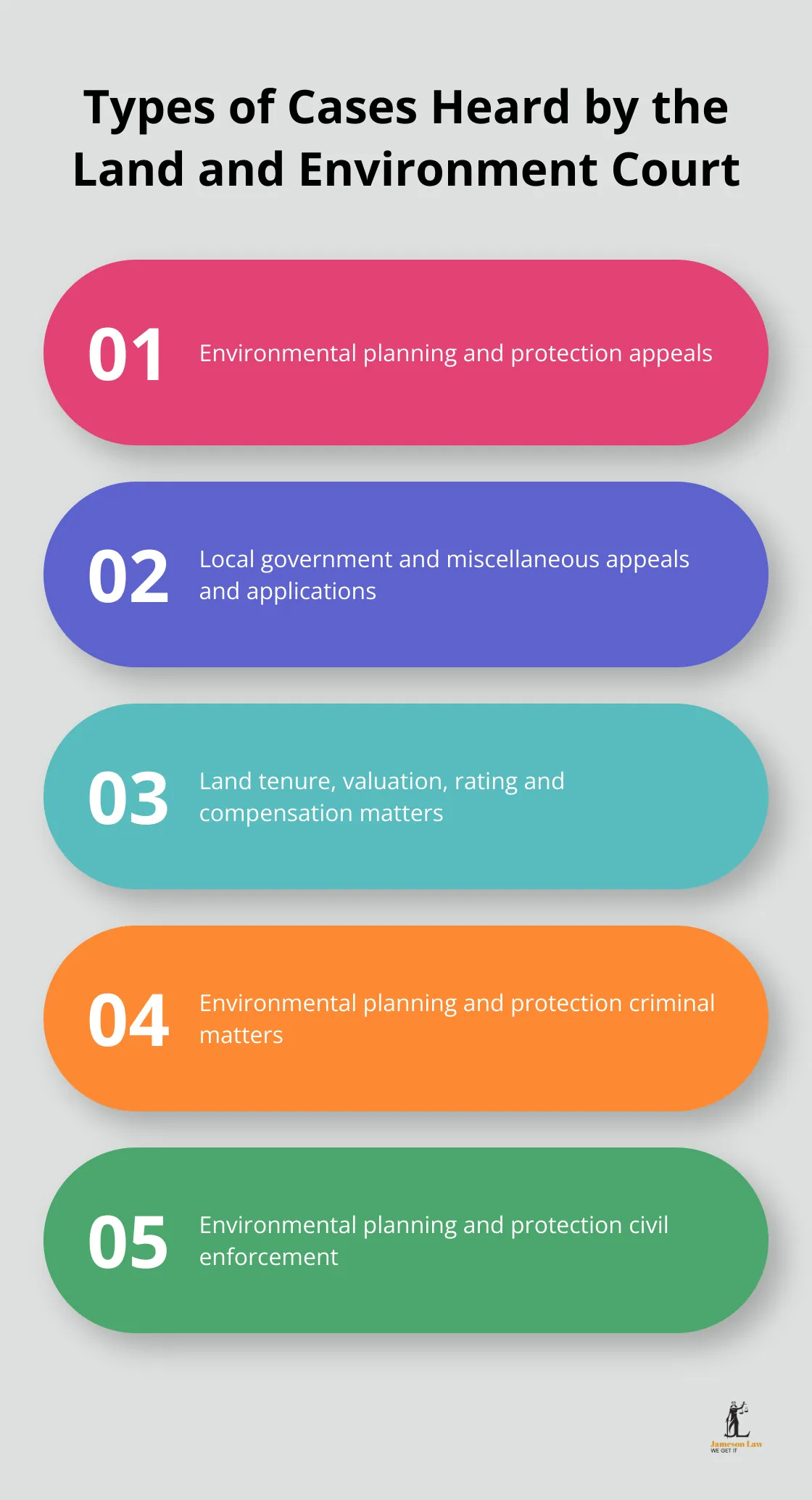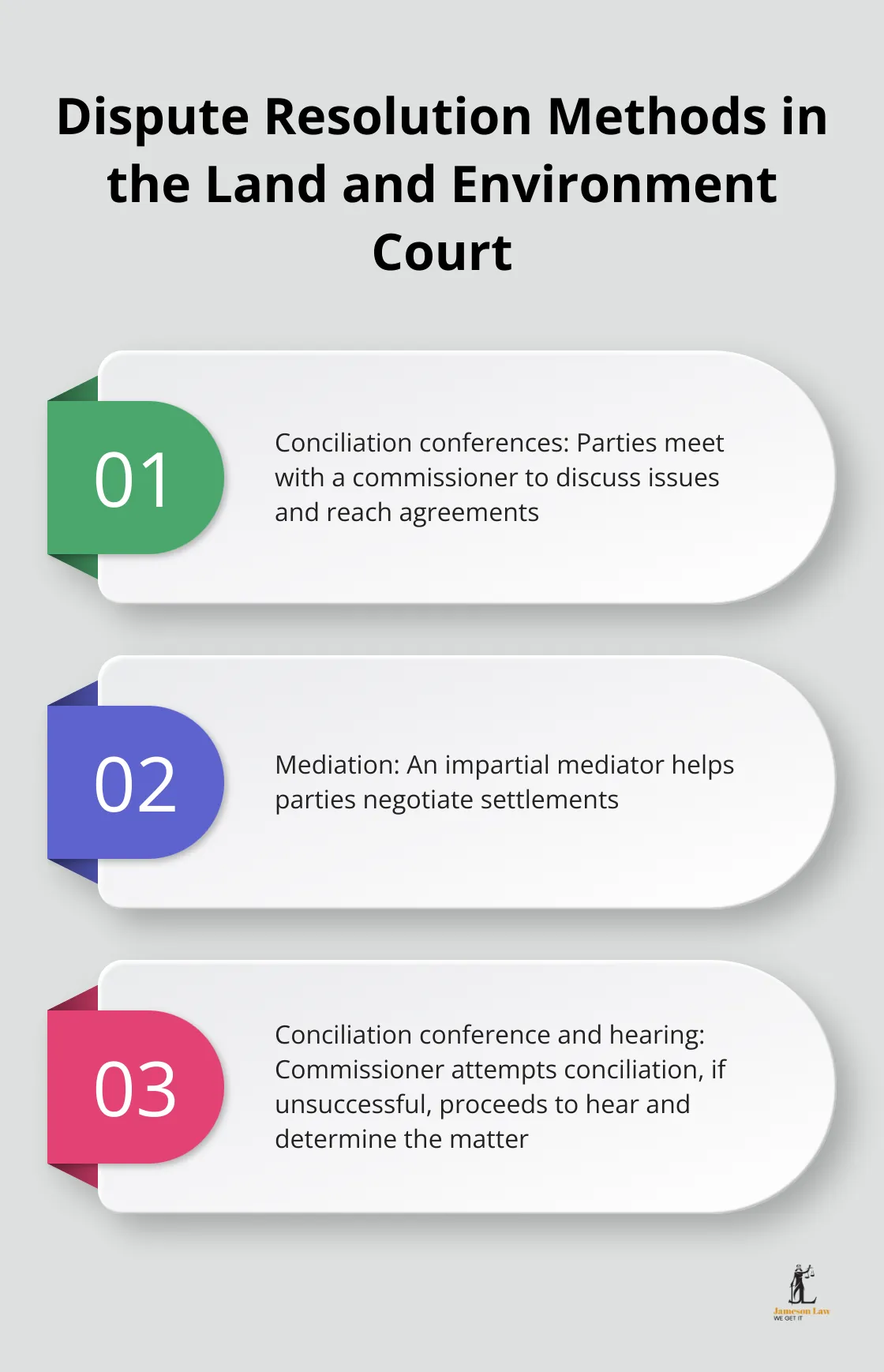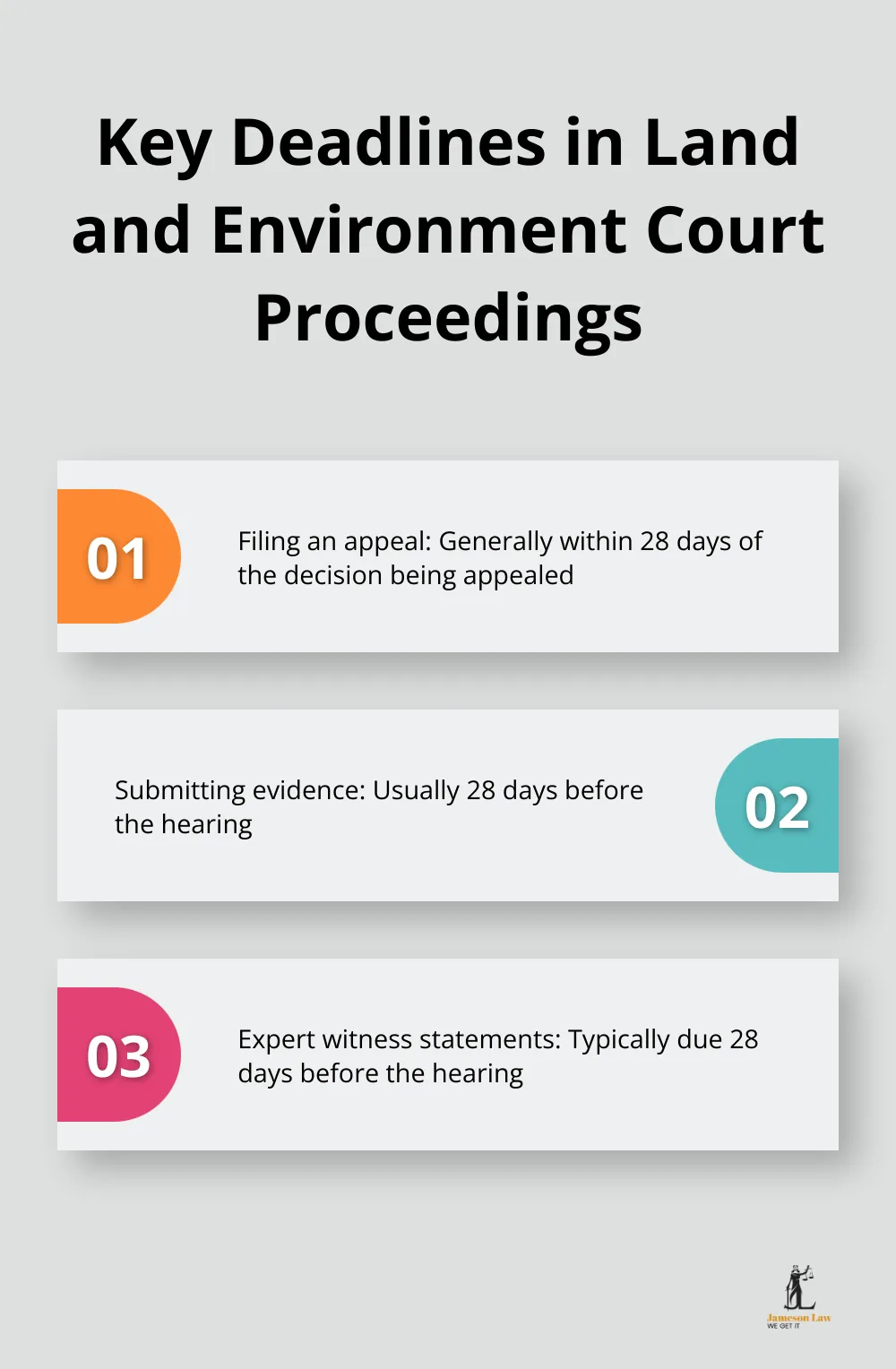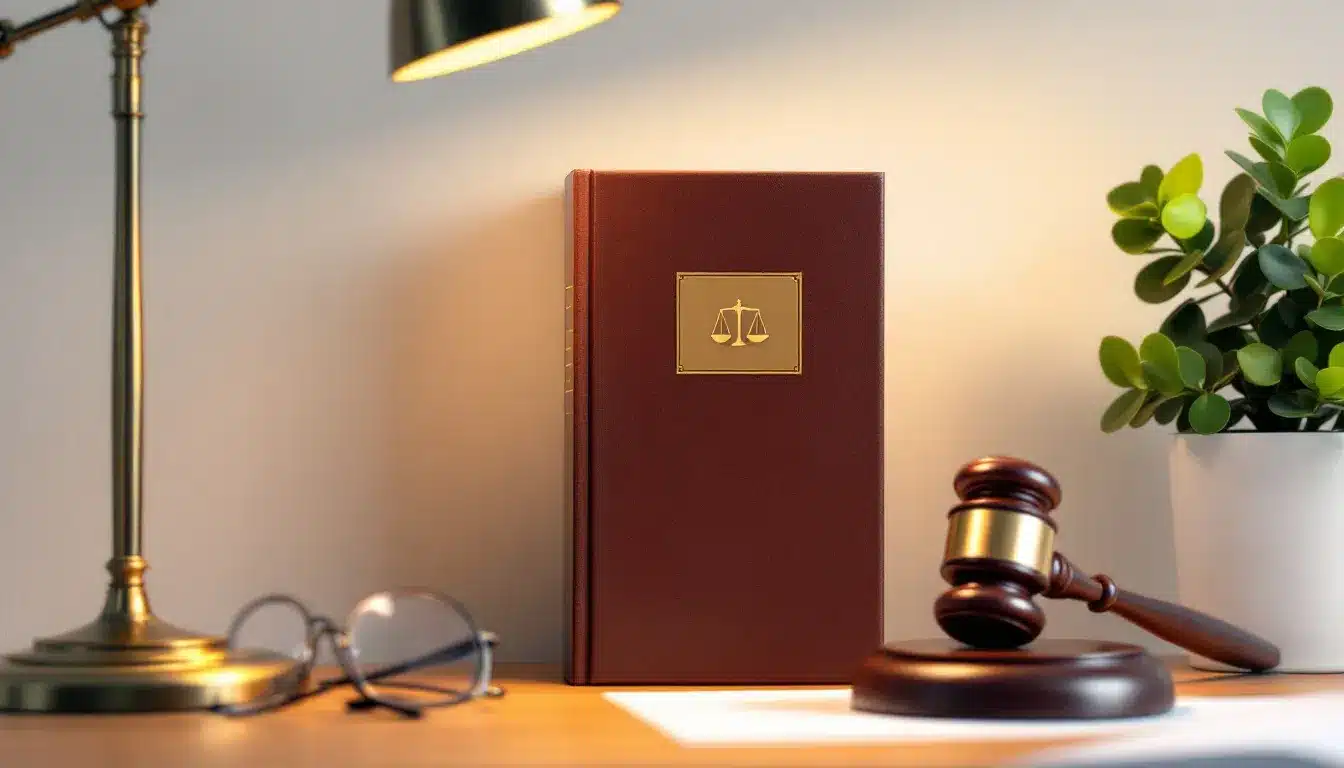The Land and Environment Court of New South Wales plays a vital role in resolving disputes related to environmental and planning issues. As a specialized court, it handles a wide range of cases, from development applications to heritage conservation matters.
At Jameson Law, we understand the complexities of navigating this unique legal system. This guide will provide you with essential information about the court’s functions, processes, and key considerations for litigants.
What Does the Land and Environment Court of NSW Do?
Jurisdiction and Purpose
The Land and Environment Court of New South Wales stands as the world’s first specialist environmental superior court. Established in 1980, this court resolves disputes related to environmental and planning laws in NSW. Its jurisdiction covers development applications, environmental protection, heritage conservation, and mining and petroleum matters.
A Practitioner’s Guide to the Land and Environment Court of NSW is a publication of the Environmental Law Committee of NSW Young Lawyers, which provides valuable insights into the court’s operations.
Types of Cases Heard
The court addresses various case types, categorised into different classes:

- Environmental planning and protection appeals
- Local government and miscellaneous appeals and applications
- Land tenure, valuation, rating and compensation matters
- Environmental planning and protection criminal matters
- Environmental planning and protection civil enforcement
- Appeals from convictions relating to environmental offences
- Other appeals relating to environmental offences
- Mining matters
Court Structure and Composition
The Land and Environment Court’s unique structure allows it to handle its specialized caseload effectively. It comprises:
- Chief Judge and Judges: These officials preside over complex matters and appeals.
- Commissioners: Experts in fields such as town planning, environmental science, and land valuation who hear less complex cases.
This structure combines legal expertise with technical knowledge in decision-making.
Alternative Dispute Resolution
The court also employs alternative dispute resolution (ADR) methods. The Australian legal sector in 2024 saw increased emphasis on Alternative Dispute Resolution to reduce court congestion and support efficient case resolution.

Importance for Environmental and Planning Disputes
Understanding the court’s structure and jurisdiction proves essential for anyone involved in environmental or planning disputes in NSW. The court’s decisions shape the state’s environmental policies and urban development practices.
As we move forward, let’s explore the key functions and processes of the Land and Environment Court, which will provide a deeper understanding of how this unique legal institution operates.
How the Land and Environment Court Operates
Dispute Resolution Methods
The Land and Environment Court of NSW uses various methods to resolve disputes without full hearings. Conciliation conferences are popular, where parties meet with a commissioner to discuss issues and reach agreements.
Mediation is another method, where an impartial mediator helps parties negotiate settlements. The court also offers a unique process called a conciliation conference and hearing. In this process, the commissioner attempts conciliation and, if unsuccessful, immediately proceeds to hear and determine the matter.
Hearing Procedures
When a case goes to a hearing, the process is less formal than in other courts but still follows specific procedures. Expert evidence is often critical in these cases. The court has strict rules about expert evidence, including the use of joint reports and concurrent evidence (also known as “hot-tubbing”).
Hearings frequently involve site inspections. The judge or commissioner visits the location relevant to the dispute. This hands-on approach allows for a better understanding of the issues at hand.
Appeals Process
Parties who are not satisfied with a decision can appeal to a higher authority within the court structure. A judge of the Land and Environment Court hears appeals from commissioners’ decisions. Further appeals on questions of law can be made to the NSW Court of Appeal.
It’s crucial to note the strict time limits for lodging appeals. For most matters, appeals must be filed within 28 days of the decision. Missing this deadline can result in losing the right to appeal.
Costs and Fees
Land and Environment Court proceedings can involve significant costs. Filing fees vary depending on the type of case and the amount in dispute.
Legal representation costs can also be substantial. While self-representation is possible in some matters, the complexity of environmental and planning law often requires professional legal advice. (Jameson Law offers flexible financing options to help manage these costs.)
In many cases, the court follows the general rule that costs follow the event, meaning the losing party may have to pay the winning party’s legal costs. However, this is not always the case, particularly in public interest litigation.
The Land and Environment Court’s unique approach to dispute resolution and specialized expertise make it a vital institution in shaping NSW’s environmental and planning landscape. As we move forward, we’ll explore important considerations for litigants to keep in mind when engaging with this court.
Navigating the Land and Environment Court
The Decision to Seek Legal Representation
Choosing whether to seek legal representation is a pivotal decision in Land and Environment Court proceedings. While self-representation is possible, the complexity of environmental and planning laws often requires professional legal guidance. The precise number of self-represented litigants appearing in courts and tribunals is not known due to a lack of available data.
For matters involving significant financial stakes or complex legal issues, engaging a lawyer is highly advisable. Professional representation can significantly increase the likelihood of a favourable outcome in complex environmental disputes.
Preparation for Court Hearings
Thorough preparation is essential for success in Land and Environment Court hearings. Start by collecting all relevant documents, including development applications, environmental impact statements, and expert reports. The court places high value on expert evidence, so secure qualified experts early in the process.
Familiarise yourself with the court’s practice notes, which outline specific requirements for different case types. For example, Class 1 development appeals require a statement of facts and contentions to be filed at least 14 days before the first directions hearing.
Site inspections are common in Land and Environment Court cases. Prepare a site inspection folder with relevant plans, photographs, and documents to assist the judge or commissioner during the visit.
Understanding Court Orders and Judgments
Court orders and judgments in the Land and Environment Court can have far-reaching implications. It’s important to understand not only the immediate effects but also the long-term consequences of these decisions.
Orders may include conditions for development approval, requirements for environmental remediation, or penalties for non-compliance.
Judgments often set precedents that influence future cases and environmental policy. For instance, the Rocky Hill case in 2019 was the first rejection by an Australian court of a coal mine based, in part, on climate change.
Timeframes and Deadlines
Adhering to court-imposed timeframes and deadlines is essential in Land and Environment Court proceedings. Missing a deadline can severely jeopardise your case or even result in its dismissal.
Key deadlines include:

- Filing an appeal: Generally within 28 days of the decision being appealed
- Submitting evidence: Usually 28 days before the hearing
- Expert witness statements: Typically due 28 days before the hearing
The court’s e-court system allows for electronic filing of documents, but it’s important to factor in processing times. Try to submit documents at least 24 hours before the deadline to avoid any technical issues.
Understanding the court hierarchy in Sydney can also be beneficial when navigating the Land and Environment Court.
Final Thoughts
The Land and Environment Court of New South Wales resolves environmental and planning disputes with specialized jurisdiction. Its decisions shape state environmental policies and urban development practices, often setting precedents for future cases. The court’s unique structure and processes require careful preparation, strict deadline adherence, and a deep understanding of complex laws.
We at Jameson Law offer expert legal services to help you navigate the intricacies of the Land and Environment Court. Our experienced lawyers provide tailored support across various practice areas, including environmental and planning law. We understand the court’s procedures and will guide you through every step, from initial filings to appeals.
Our team strives to achieve the best outcomes for our clients in matters within the court’s jurisdiction. We offer flexible financing options (and a No Win No Fee policy for plaintiff personal injury claims) to ensure accessible legal representation. Contact Jameson Law for expert guidance in your Land and Environment Court case.













